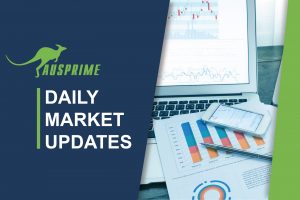MARKET UPDATE

Asia FX sinks, As the dollar strengthened
Most Asian currencies retreated on Thursday, while the dollar strengthened as Federal Reserve Chair Jerome Powell flagged the potential for more interest rate hikes, pointing to pressure on regional markets.
Speaking at a European Central Bank forum, Powell said that while the Fed had come a long way in its battle against inflation, there still stood the possibility of at least two more rate hikes to curb stubborn inflation.
His comments pushed up the dollar and Treasury yields, with the dollar index and dollar index futures both rising over 0.2% in Asian trade. Anticipation of U.S. personal consumption expenditures price data – the Fed’s preferred inflation gauge – also pushed traders into the dollar.
The prospect of rising U.S. interest rates weighed on most regional units, given that it points to a narrowing gap between risky and low-risk yields.
The rate-sensitive South Korean won fell 0.5% and was the worst performer for the day, while the Australian dollar edged 0.1% higher on stronger-than-expected retail sales data for May.
Regional trading volumes were also somewhat muted on account of market holidays in India, Indonesia, Malaysia, and Singapore.
Sri Lanka asks dollar debt holders for 30% haircut
Sri Lanka is asking foreign investors in its international sovereign bonds to take a 30% haircut and is seeking similar concessions from holders of its other dollar-denominated bonds as it seeks to restructure its massive debt, its central bank governor said on Thursday.
The government will also exchange treasury bills into long-term bonds as part of a domestic debt restructuring programme, Nandalal Weerasinghe told a press conference as he unveiled details of the long-awaited plan.
Sri Lanka is struggling with its worst financial crisis since its independence from Britain in 1948 after the country’s foreign exchange hit record lows and triggered its first foreign debt default last year.
Meanwhile, the government is also pushing forward with reworking its foreign debt with bondholders and bilateral creditors including China, Japan and India.
Dollar in demand as Powell confirms hawkish stance
The U.S. dollar traded higher in the early European session Thursday, adding to the previous day’s gains after Fed Chair Jerome Powell reaffirmed that more rate increases are likely as the leaders of the major central banks sent hawkish signals from the European Central Bank’s annual gathering in Sintra.
At 02:00 ET (06:00 GMT), the Dollar Index, which tracks the greenback against a basket of six other currencies, traded 0.2% higher at 102.797, after climbing 0.5% overnight.
Powell backs up ‘higher for longer’
Powell, speaking at the ECB conference on Wednesday, noted that two more rate rises are likely this year, with an increase at its next policy meeting in late July still a possibility.
In addition, Powell also said he does not see inflation coming down to the Fed’s 2% target until 2025, adding credence to the concept that interest rates will stay ‘higher for longer’.
Friday’s release of the personal consumption expenditures index, the Fed’s favourite gauge of inflation, and then the jobs report for June, which is due out at the end of next week, will make up two big data points for policymakers to consider at the July meeting.
However, before that, Thursday sees the release of another reading of the first quarter’s gross domestic product growth, which is expected to show an increase of 1.4%.
Important Note: The information found on Ausprime platform is intended only to be informative, is not advice nor a recommendation, nor research, or a record of our trading prices, or an offer of, or solicitation for a transaction in any financial instrument and thus should not be treated as such. The information provided does not include any specific investment objectives, financial situation and needs of any specific person who may receive it. The past performance is not a reliable indicator of future performance and/or results. Past Performance or Forward-looking scenarios are not a guarantee of future performance. Actual results may differ materially from those anticipated in forward-looking or past performance statement